It’s hard to capture what exactly makes cheddar cheese so special. How do you describe the feeling of a first kiss, or when the first few rays of golden sunlight gently peek out after a thunderstorm? Some things just defy explanation.
While we can’t definitively tell you why cheddar has captured the love of cheese enthusiasts across the world, we can help you understand the storied history behind cheddar and all the glorious forms and flavors it comes in. Get ready to learn, Cheese Lover.
Cheese History: The Story Behind Cheddar
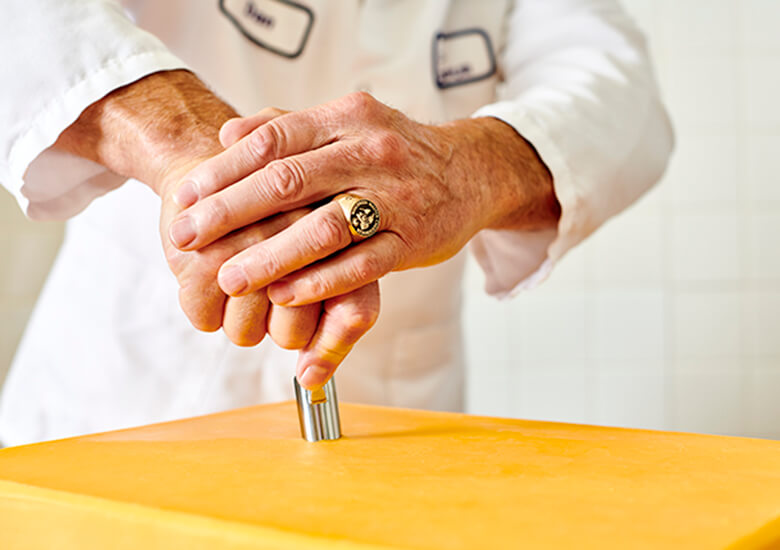
Originally born in the English countryside, we can trace cheddar’s origin back to the 12th century when cheesemakers in England's southwest corner were producing a variety of farmstead cheeses. Over the centuries, the process was gradually refined and by the mid-1800s cheeses coming from this area, specifically Somerset, Gloucester, and Wiltshire, were considered pretty spectacular and demand grew.
Why is it called cheddar? Cheeses were traditionally named after their place of origin and thus cheddar is the namesake of its birthplace: Cheddar, England.
Cheesemakers in this region hit on the idea of scalding the curds to help remove the whey. This produced a drier cheese that traveled and aged better than other cheeses of its time.
When the first English immigrants settled in Wisconsin in the early 1800s, they brought their passion for cheddar with them—and Wisconsin became the crown jewel of the cheddar-making world. By the 1880s, more cheddar was made in Wisconsin than any other cheese variety.
Meanwhile, cheese technology was advancing as fast as people could eat it. Joseph Harding, considered the father of modern cheddar cheese, applied scientific concepts to develop a curd scalding method and a refined cheese mill. The first few large-scale cheesemaking operations opened, and over the next few decades, cheddar became a staple across the U.S. and beyond.
All About Cheddar

Are there different types of cheddar?
You bet! There are countless varieties of cheddar that span the gamut from the everyday to the extraordinary. Below are a few of our favorites that you should know.
Blue Cheddar: Why choose between cheddar and blue cheese when you can have both? Like the name suggests, this Wisconsin Original is a type of cheddar known for its distinctive blue veining. How does it work? During the cheese making process, cheddar is inoculated with Penicillium roqueforti, the friendly microbe responsible for blue cheese’s distinctive and beloved flavor. Blue Cheddar is mellower than most blues but bit more robust than most cheddars. Just look at that cross-section !

Aged Cheddar: These are cheddars that have been aged anywhere from a few months to over twenty years. During the aging process, your cheddar goes through several natural processes that create even more flavor and texture. The breakdown of fat and protein in particular gives aged cheddar its classic tangy flavor. Additionally, the cheddar slowly loses moisture, further concentrating all those favorite flavors into a dense and usually flakey cheese.
Colby: We know what you’re thinking: “But Colby is different from cheddar!” Get ready for some cheese history. Colby is a cheese that was first made in the Wisconsin town of Colby. If Wisconsin had a state cheese, Colby would definitely be a front-runner. How is Colby like cheddar? The cheese making process is actually quite similar to cheddar—specifically young cheddar. In terms of differences, Colby is generally softer and more elastic than cheddar, although it maintains a similarly mild flavor profile.
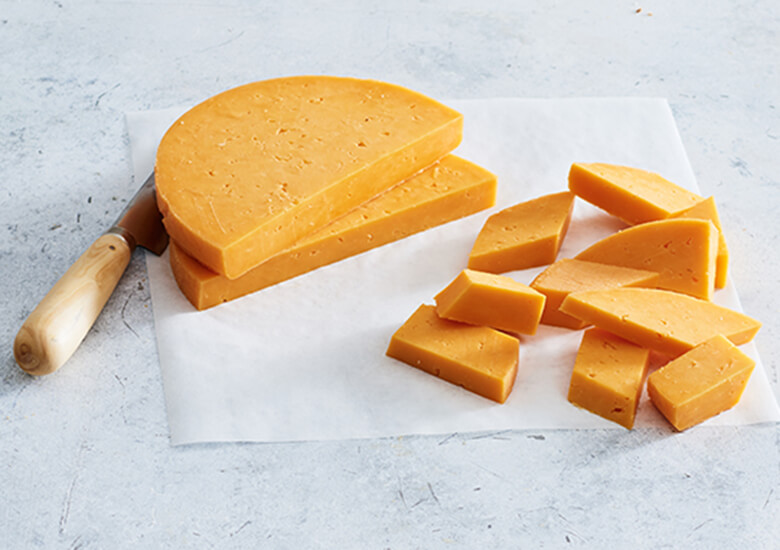
Young Cheddar: Whether you’re snacking on it solo or toping a slice of apple pie with it, young cheddar is the mild cheese everyone has heard of. Smooth, semi-firm, and delightfully creamy, young cheddar is approachable and goes with nearly anything.
What does cheddar taste like?
Young cheddar is very mild, creamy, and smooth. The texture is
slightly buttery, moist, and a little melty. It’s truly a versatile
crowd-pleaser. Aged cheddars become more nutty, crumbly, and sharp.
During the
aging process the cheese develops a slightly tangier finish, some earthy notes,
and some hard salt-like crystals that add a slight crunch to each bite.
On a
grilled cheese, grated into the crust of an apple pie or eaten on its own,
cheddar is truly delicious.
What does cheddar look like?
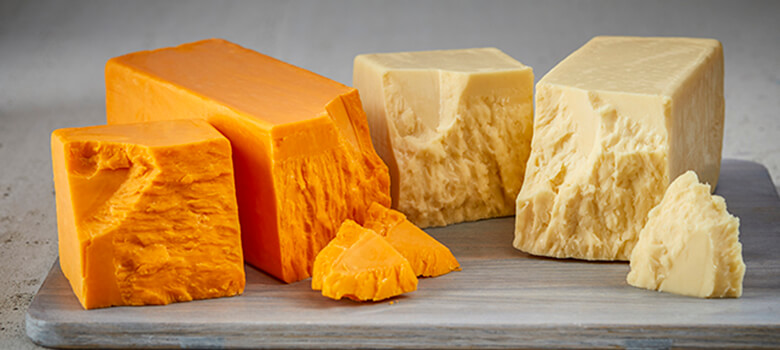
Cheddar is naturally a light, creamy yellow, but in the store you
can find everything from milky white to bright orange. The more orange
varieties of cheddar are made with a natural dye called annatto. The
history of orange cheddar is legen-dairy, and there are a few reasons why cheddar took on this bright hue.
One idea stems back to the early days of cheese production. In the
olden days of cheesemaking, milk varied greatly with the seasons. For example, summer milk might appear to be more golden-hued because of all the fresh forage cows enjoyed during the season. This variability drove early cheese lover shopping preferences for cheddars with a certain
appearance. Cheesemakers of the time sought to reduce the visible markers of
seasonal variation by using annatto to color the milk used for cheesemaking.
Modern dairy practices have virtually eliminated seasonal variation in the milk
pool, but some Wisconsin Cheesemakers have preserved this tradition as a way to
differentiate their cheese. Those loyal to orange cheddar will tell you is
definitely tastes better, though skeptics will claim that’s not science.
White, orange, or anything in between—to us, no color is cheddar
than the others.
What
does cheddar smell like?
Young cheddar can often smell milky, mild, and maybe even slightly
sweet. On the opposite end of the spectrum, aged cheddars can have a stronger
earthy or funky aroma.
Pairing Cheddar
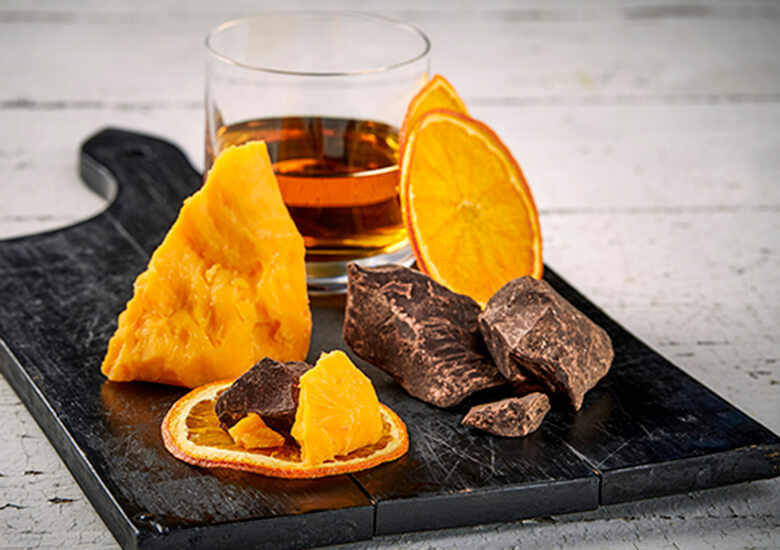
Cheese pairing might seem like a challenge, but we have good news: cheddar pairs well with just about anything. For those looking to do a deep-dive into the world of cheese pairing, we recommend starting with our beginner’s guide to cheese pairing. Meanwhile, we'll give you a few ideas about how to match cheddar for some dairy delights.
What beer goes well with cheddar?
Opt for a mature beverage with a hint of sweetness. Some of our favorite pairings include ales and cider. after all, apples and cheddar cheese are a pretty perfect pair.
What wine pairs best with cheddar?
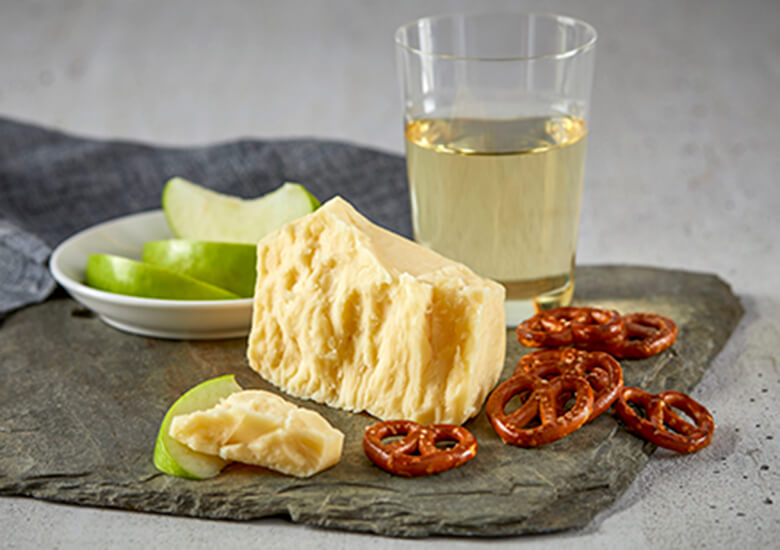
For a mild cheddar, we love the refreshing, fruity notes of white wine. If you have a sharper, aged cheddar on hand, select a red wine with a similar flavor intensity to the cheese, like pinot noir.
What spirits should I have with cheddar?
Dark barrel-aged spirits like rum, bourbon, and scotch all provide an edge of sweetness alongside complex flavors. Paired with cheddar, it’s almost a balanced meal.
Ready to cheddar?
Cheddar is truly one of the most versatile cheeses out there, and we can’t wait to see what varieties Wisconsin’s Master Cheesemakers come up with next.
If all this talk of cheddar has gotten you hungry for a cheese tasting, you can get Wisconsin’s finest cheddars delivered right to your door with our continuously updated list of cheesemakers and retailers that allow you to order cheese online. Award-winning Wisconsin cheese is just a click away!
Craving something else? Choose from our selection of over 300 recipes featuring Wisconsin Cheese. Don’t forget to share your creative delights with us on Facebook and Instagram.
FAQs
What goes well with cheddar cheese?
Cheddar is a wonderfully agreeable cheese that gets along with nearly any pairing. For wine, you can’t go wrong with a red like pinot noir or white riesling. If you’re more of a beer person, you can turn to a hoppy IPA but make sure the hoppiness of the IPA matches the cheese. For example, an aged cheddar will need to be paired with something like a double IPA to balance the flavors. For side-snacks, we’d recommend honey or fig jam for a touch of sweetness on crackers for some crunch.
How is cheddar made?
The process for making cheddar is similar to many other cheeses. It starts with culturing milk, then adding the starter bacteria. This bacterium acidifies the milk and forms curds. These fresh curds are then separated from the whey that is left behind. From here, the curds are heated and pressed in what’s known as the cheddaring process. The exact pressing time, temperature, and other details vary depending on the cheesemaker, but the basics are always the same.
When was cheddar first made?
As best we can trace it, a cheddar-like cheese was first created in the small village of Cheddar back in the 12th century. Located in the southern foothills of the U.K., the village of Cheddar had the benefit of caves neighboring the area that presented the perfect temperature and humidity for aging cheese. Cheddar cheese quickly became popular. English immigrants brought their passion for cheese to Wisconsin in the early 1800s, and well, the rest is history.
